|
|
|
|
|
|
|
|
|
|
|
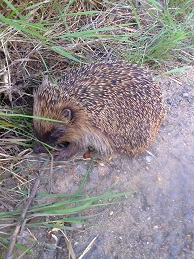 |
|
|
|
|
Once, when I was a little girl,
and none of us knowing any better, my family and I brought home a hedgehog,
thinking it would love to live in our garden. One day, our new kitten
escaped from the house*. We hadn't seen the hedgehog much, but we hadn't
been worried . . . I ran around frantically knocking on neighbours'
doors. Nobody had seen a kitten, but one lady told me she'd seen a hedgehog
trundling along the street. A car had pulled up, and the driver had
asked her was it her hedgehog? She said no, he said, well, I'm having
it, got it into the car and off he went . . . That was the end of our
adventure in hedgehog ownership, but my devotion remained undimmed.
Why are hedgehogs my favourite native mammal? Same reason as they're
the rest of UK respondents "favourite wild animal" I expect.
They let themselves be seen. They let you get up close. Even in the
old semi-rural days of the Sixties on the edge of Manchester, when Mrs
Tiggwinkle and Fuzzypeg (the slightly crazy son of Milkman Hedgehog
in Little Grey Rabbit,
as I'm sure you remember) were still starring in their endearing hedgrow
adventures, I never got near any other kind of wild mammal. The privilege
is irresistible.
Today I live in the middle of
a raucous herring gull colony and surrounded by urban foxes. We have
sparrowhawks across the road, and I don't need to tell you about the
frogs, do I? If you like spying on badgers I can show you where, minutes
away from my house. I know there are still fieldmice in my garden, despite
Milo's best efforts. It's strange if we don't see a few red deer
hinds, or roe deer, feeding, if we pass along a woodland margin at twilight.
Rabbits begin at Falmer. But I don't see hedgehogs. I used to. All the
time, although often deceased. Not anymore. The UK's favourites are
in precipitous decline. Why? Maybe we need look no further than
the precipitous increase in road traffic, road speeds; wide carriageways,
roads generally, in the last forty years. A small prickly animal
that thinks stopping and curling up is the best response to any threat
is not in a good place when that threat is a huge, speeding vehicle.
Maybe it's intensive farming. Or those terrifyingly toxic neonicotinoids,
getting into the foodchain (but it's never just one thing, anyway).
Maybe the decline can be reversed. I hope so, but it would take some
big changes.
Anyway, this was the Hoglog.
It all started in 1998, when I created my first website and decided
I had to have a page to celebrate hedgehogs. You can find that content
here: with contributions from Gabriel Jones,
rural expert Garry Kilworth, Lucy Sussex with an NZ perspective, and
poetry from Darko Suvin.
I decided to open the log to
other notable wildlife sightings in 2004
I'm updating it now.
2003-2007
here
*Tabitha the kitten
was fine. She was just hiding.
|
|
|
2014
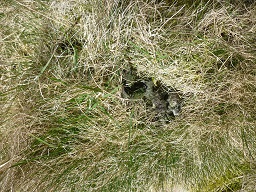
Friday 18th April. Otter Spraint, positioned
on a tussock of couch grass, Great Moss Cumbria. Contained bright
blue beetle wing cases and fine fishbone. Inspired by Miriam
Darlington, we'd sought in vain for traces of the Lakeland otters
around Crummock Water, but we're having this.
|
|
|
Tuesday 10th June. A Barn Owl, hunting over
Woods Mill Meadow (Sussex
Wildlife Trust) in the twilight, while we were watching the
kestrel nesting box: where the parents were rather forcefully encouraging
their second youngster to take the plunge, while the older fledgling
sat smugly in a neighbouring oak tree.
|
|
|
|
|
|
|
|
|
|
|
|
|
|
|
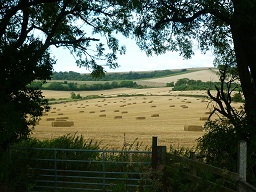
Friday 22nd August, walking in the Mardens,
West Sussex. Any amount of rabbits & blackberries, a feast of chicken
in the woods pulled from a yew tree, and once a hare calmly loping across
a cornfield, where the big glittery golden straw rolls made black shadows.
|
|
|
|
|
|
|
|
|
|
|
|
|
|
|
2013
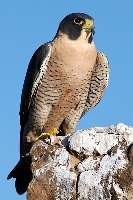 Monday
April 8th & Saturday April 13th, a pair of peregrine falcons on
the snowy crags above Tarn Beck Falls, Cumbria. I saw them
on the 8th, and was convinced they weren't buzzards, didn't get a
chance to return with binocs until the morning we were leaving and
never thought they'd turn up again, but there they were & I was
well pleased. I suppose I should relegate peregrines to the same status
as buzzards, foxes, rabbits, grey squirrels etc, since they've become
so urbanized. But just this once. The photo is from the wildlife
photographers' blogspot Monday
April 8th & Saturday April 13th, a pair of peregrine falcons on
the snowy crags above Tarn Beck Falls, Cumbria. I saw them
on the 8th, and was convinced they weren't buzzards, didn't get a
chance to return with binocs until the morning we were leaving and
never thought they'd turn up again, but there they were & I was
well pleased. I suppose I should relegate peregrines to the same status
as buzzards, foxes, rabbits, grey squirrels etc, since they've become
so urbanized. But just this once. The photo is from the wildlife
photographers' blogspot
|
|
|
|
|
|
|
|
|
|
|
|
|
|
|
 Thursday July 18th Penduline Tits, and also European Muskrats,
while kayaking through the Acheron Delta. Praying Mantis on the Korykion
Cave path above the Sanctuary at Delphi, Wednesday July 31st. I love
Praying Mantises, I've wondered why and decided it's because they
have necks (or something like) = they can turn their heads, and point
that little heart-shaped face at you. Makes them different from your
average bug. Our tour around Roumeli wasn't prolific in wildlife sightings,
but nesting storks and the little grebe swimming underwater in the
lake at Ioannina (looking very Jurassic), deserve honourable mention.
Thursday July 18th Penduline Tits, and also European Muskrats,
while kayaking through the Acheron Delta. Praying Mantis on the Korykion
Cave path above the Sanctuary at Delphi, Wednesday July 31st. I love
Praying Mantises, I've wondered why and decided it's because they
have necks (or something like) = they can turn their heads, and point
that little heart-shaped face at you. Makes them different from your
average bug. Our tour around Roumeli wasn't prolific in wildlife sightings,
but nesting storks and the little grebe swimming underwater in the
lake at Ioannina (looking very Jurassic), deserve honourable mention.
|
|
|
|
|
|
|
|
|
|
|
|
|
|
|
|
|
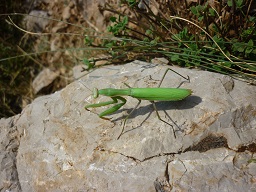 |
|
|
|
|
|
|
|
|
|
|
|
|
|
|
|
|
|
2012
Friday 17th August, 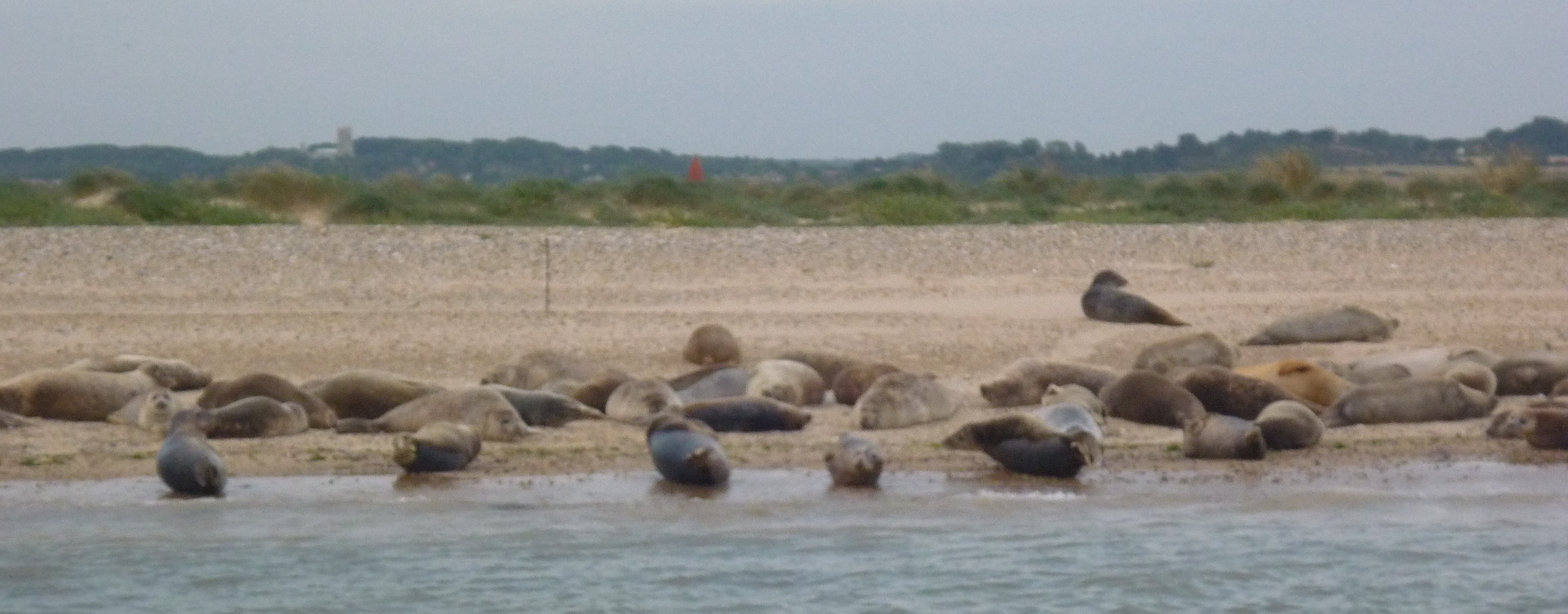 seals
at Blakeney Point, also the mackerel that we were trolling for from
a pram boat called Auntie Pam, courtesy of Hidden
Norfolk. I even caught one, to my amazement. Seals are too like
slugs, giant slugs with big teeth, I don't really like them. I'd probably
feel differently if I met them in the water (scared). The goshawks
that quartered the treetops above the little wood attached to the
Old Schoolhouse, the voles and shrews that thrilled our domestic predators.
It was like taking the kids to Disneyland, can't say we really enjoyed
the carnage, but Milo and Ginger were having such fun it wd have been
a shame not to act enthusiastic. At least there were no queues. Bats
outside our back door, the natterjack toad that crept by the wall,
a hare that leapt out in front of a car (not ours, we were on bicycles)
and got away with it & last but not least what I had been hoping
for, when I suggested we come to North Norfolk. Sunday 19th August,
on the way to Holkham, just past the Slow Peacocks sign, near Binham
Priory, Peter suddenly yelled out "Hedgehog!", he pulled
in and I hurried back and he was right, a hedgehog, nosing along the
grassy verge in broad daylight. I picked her up and put her out of
harm's way, for which I bet she wasn't grateful. She'd barely begun
to curl up before I put her down again so I didn't get prickled. How
lovely to see her, and the soft fringe of fine hair around the skirt
of her spiny mantle, & her bright small eyes and little dark turned
up nose. Irresistible privilege. I hope I didn't make too much of
a mess of her busy morning. She's up at the top of this page. seals
at Blakeney Point, also the mackerel that we were trolling for from
a pram boat called Auntie Pam, courtesy of Hidden
Norfolk. I even caught one, to my amazement. Seals are too like
slugs, giant slugs with big teeth, I don't really like them. I'd probably
feel differently if I met them in the water (scared). The goshawks
that quartered the treetops above the little wood attached to the
Old Schoolhouse, the voles and shrews that thrilled our domestic predators.
It was like taking the kids to Disneyland, can't say we really enjoyed
the carnage, but Milo and Ginger were having such fun it wd have been
a shame not to act enthusiastic. At least there were no queues. Bats
outside our back door, the natterjack toad that crept by the wall,
a hare that leapt out in front of a car (not ours, we were on bicycles)
and got away with it & last but not least what I had been hoping
for, when I suggested we come to North Norfolk. Sunday 19th August,
on the way to Holkham, just past the Slow Peacocks sign, near Binham
Priory, Peter suddenly yelled out "Hedgehog!", he pulled
in and I hurried back and he was right, a hedgehog, nosing along the
grassy verge in broad daylight. I picked her up and put her out of
harm's way, for which I bet she wasn't grateful. She'd barely begun
to curl up before I put her down again so I didn't get prickled. How
lovely to see her, and the soft fringe of fine hair around the skirt
of her spiny mantle, & her bright small eyes and little dark turned
up nose. Irresistible privilege. I hope I didn't make too much of
a mess of her busy morning. She's up at the top of this page.
|
|
|
|
|
|
|
|
|
|
|
|
|
|
|
|
|
|
2011
|
|
|
|
|
|
|
|
|
|
|
|
|
|
|
|
|
|
|
|
19th July Aiguilles Du Midi. First, from the skilift, Ibex.
Two brown backs speeding below us through the trees. 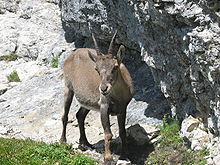 Later,
as we walked down from the Plan Du Midi, marmottes! One of them running
in the rocks right beside us, and still there, peering cautiously, when
we caught up. Known as the beaver of the mountain tops, richly furry
with fine, long-fingered paws like gloved hands, spread on the stone:
looking at me aimiably with sleepy, Later,
as we walked down from the Plan Du Midi, marmottes! One of them running
in the rocks right beside us, and still there, peering cautiously, when
we caught up. Known as the beaver of the mountain tops, richly furry
with fine, long-fingered paws like gloved hands, spread on the stone:
looking at me aimiably with sleepy, 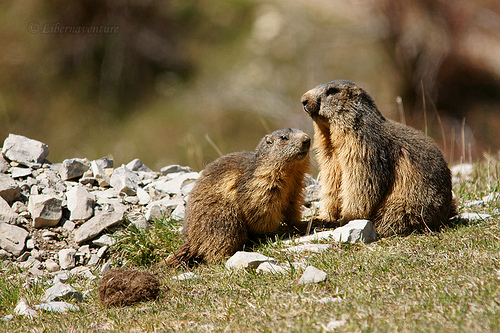 narrow
eyes. Zig-zag, all the way down, I saw firecrests in the fir trees and
heard them piping all around us, and when we got down to the big trees
once a black squirrel. darting away. But the best, and most extraordinary,
was close to the foot of the descent, when Peter suddenly squealed (quietly)
& there was a mole, a panicking scrap of charcoal velvet,
so soft and low we couldn't see its feet., only the the flurry of its
deperate hurry to get into the leaf litter, and then no further, still
perfectly visible but apparently feeling safe. Lucky we weren't predators
(though Peter later confessed he had longed to pick it up). narrow
eyes. Zig-zag, all the way down, I saw firecrests in the fir trees and
heard them piping all around us, and when we got down to the big trees
once a black squirrel. darting away. But the best, and most extraordinary,
was close to the foot of the descent, when Peter suddenly squealed (quietly)
& there was a mole, a panicking scrap of charcoal velvet,
so soft and low we couldn't see its feet., only the the flurry of its
deperate hurry to get into the leaf litter, and then no further, still
perfectly visible but apparently feeling safe. Lucky we weren't predators
(though Peter later confessed he had longed to pick it up).
|
|
|
|
|
|
|
|
|
|
|
|
|
|
|
|
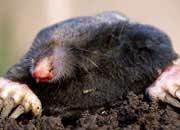 |
|
|
|
|
|
|
|
|
|
|
|
|
|
|
|
|
|
|
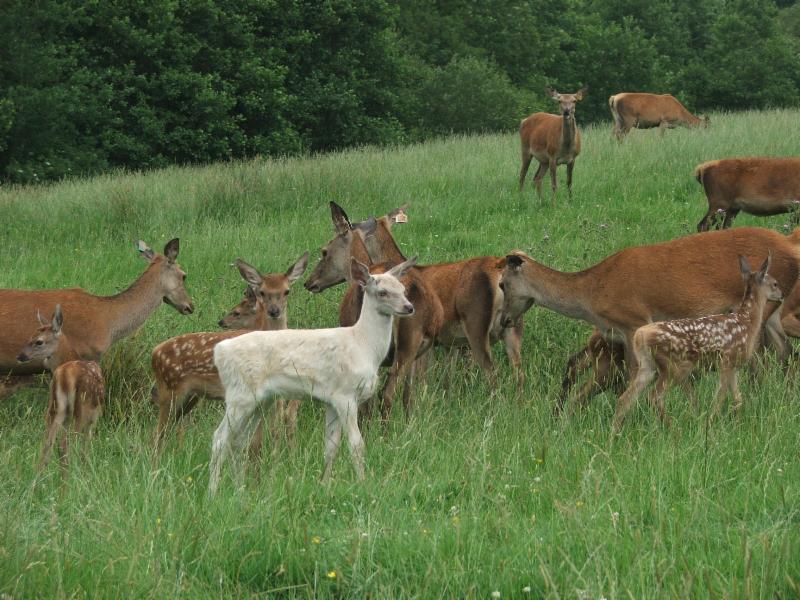 Sunday
16th October. Out foraging in Patching
Woods. The sweet chestnuts were ready, even picked-over, we collected
about a kilo. No funghi except some decaying puffballs, as it's been
so dry. Later after an unplanned lunch at the Hammerpot we went to
investigate a wall of white, a cliff in the woods, and found a small
disused quarry. There or thereabouts I found the 2nd four-leaved clover
of my career, and shortly after that Peter spotted a white
red deer hind, looking like a stripped and twisted little tree. She
ran away into the bracken. Made us realise we'd seen a quiet man with
a very fancy rifle, earlier. I hope he wasn't after her, but he probably
was. The photo, obviously not Patching Woods, is from a
very interesting article about the "white" hind phenomenon.
. . On the way home, in the meadow, we picked a box full of sloes;
just because they were there. Sunday
16th October. Out foraging in Patching
Woods. The sweet chestnuts were ready, even picked-over, we collected
about a kilo. No funghi except some decaying puffballs, as it's been
so dry. Later after an unplanned lunch at the Hammerpot we went to
investigate a wall of white, a cliff in the woods, and found a small
disused quarry. There or thereabouts I found the 2nd four-leaved clover
of my career, and shortly after that Peter spotted a white
red deer hind, looking like a stripped and twisted little tree. She
ran away into the bracken. Made us realise we'd seen a quiet man with
a very fancy rifle, earlier. I hope he wasn't after her, but he probably
was. The photo, obviously not Patching Woods, is from a
very interesting article about the "white" hind phenomenon.
. . On the way home, in the meadow, we picked a box full of sloes;
just because they were there.
Nothing particular, good or bad, happened after these portents, so
far as I remember.
|
|
|
|
|
|
|
|
|
|
|
|
|
|
|
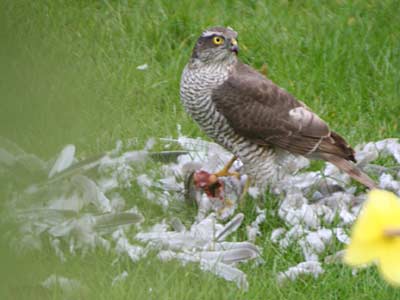 Wednesday
26th October. Peter and Gabriel had been working hard all day, decorating
Gabriel's room. 4.30pm: a hawk! A sparrowhawk, pluming a collared
dove on the bathroom roof, right under my window. Peter ran upstairs
to tell me. How she glared! With the most amazing arrogant marigold
eyes.A sparrowhawk! Right there! Female by the size, old by the orange
eyes. They live in King Death's Garden, across the valley, in the
tall trees. We sometimes see them passing by, cruising stealthily
along the Crescent Gardens, but never before up close. Wednesday
26th October. Peter and Gabriel had been working hard all day, decorating
Gabriel's room. 4.30pm: a hawk! A sparrowhawk, pluming a collared
dove on the bathroom roof, right under my window. Peter ran upstairs
to tell me. How she glared! With the most amazing arrogant marigold
eyes.A sparrowhawk! Right there! Female by the size, old by the orange
eyes. They live in King Death's Garden, across the valley, in the
tall trees. We sometimes see them passing by, cruising stealthily
along the Crescent Gardens, but never before up close.
|
|
|
|
|
|
|
|
|
|
|
|
|
|
|
2010
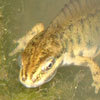
Two newts walking slowly in the fishpool. The
(common) newts are now regulars, this was their first recorded visit.
|
|
|
|
|
|
|
|
|
|
|
|
|
|
|
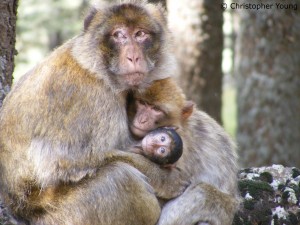 Weds
July 28th: Morrocan Macaques (aka Barbary Apes) in the cedar forest
above Azrou. A long walk to reach the remains of the forest, a fledgling
sparrow by the road, fruit bats sleeping in the giant new Arab Emirates
caravanserai; gardens of lavender and rosemary, sage and honeysuckle.
Can only hope the rich will come and enjoy the cedars enough to preserve
them. We took no pictures of the endangered "apes" but you can
reach an interesting site by clicking the photo. The rabble hanging around
the hotspot had a horribly corrupt relationship with the trippers, foreign
and Moroccan, the macaques who avoided this experience deserved the respect
they got from us, when we met them among the trees and just walked on
by. The cedars are wonderful. Weds
July 28th: Morrocan Macaques (aka Barbary Apes) in the cedar forest
above Azrou. A long walk to reach the remains of the forest, a fledgling
sparrow by the road, fruit bats sleeping in the giant new Arab Emirates
caravanserai; gardens of lavender and rosemary, sage and honeysuckle.
Can only hope the rich will come and enjoy the cedars enough to preserve
them. We took no pictures of the endangered "apes" but you can
reach an interesting site by clicking the photo. The rabble hanging around
the hotspot had a horribly corrupt relationship with the trippers, foreign
and Moroccan, the macaques who avoided this experience deserved the respect
they got from us, when we met them among the trees and just walked on
by. The cedars are wonderful. |
|
|
|
|
|
|
|
|
|
|
|
|
|
|
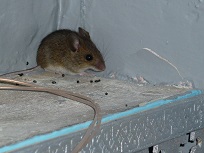 Thursday
December 9th Eeek! A mouse! In the house! About 4.00am, two cats were
going berserk. I finally got up for them, they were very interested
in something behind the laundry basket. It was a little field mouse,
but it got away and Peter refused to believe me. So, cats banished,
mouse vanished, but I knew I'd seen it. Later, when Peter had gone to
work and I was lazing in bed reading New Scientist, I saw its shadow
through the cut-out pelmet above the window curtains. It had escaped
up the curtains, jumped to the pelmet and found itself a safe perch.
I gave it some sunflower seeds (it had evidently been in some biological
distress: bricking it, as my brother David elegantly remarked
when he arrived later). I didn't try to catch it. I left it where it
was, to vindicate me against charges of waking people up in the middle
of the night for nothing. We let it go, out in the garden. Thursday
December 9th Eeek! A mouse! In the house! About 4.00am, two cats were
going berserk. I finally got up for them, they were very interested
in something behind the laundry basket. It was a little field mouse,
but it got away and Peter refused to believe me. So, cats banished,
mouse vanished, but I knew I'd seen it. Later, when Peter had gone to
work and I was lazing in bed reading New Scientist, I saw its shadow
through the cut-out pelmet above the window curtains. It had escaped
up the curtains, jumped to the pelmet and found itself a safe perch.
I gave it some sunflower seeds (it had evidently been in some biological
distress: bricking it, as my brother David elegantly remarked
when he arrived later). I didn't try to catch it. I left it where it
was, to vindicate me against charges of waking people up in the middle
of the night for nothing. We let it go, out in the garden.
|
|
|
|
|
|
|
|
|
|
|
|
|
|
|
2009
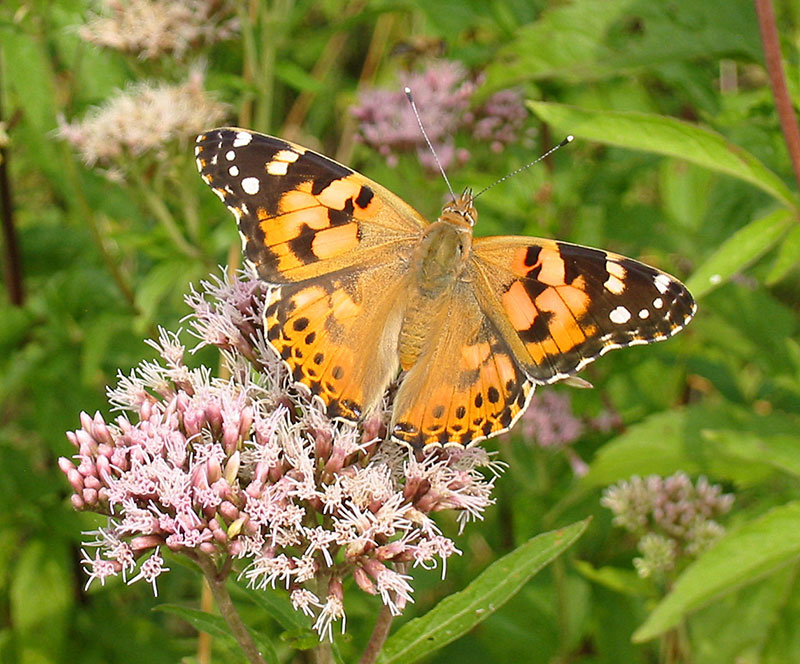 Friday
29th May Momentous day. (I don't usually do butterflies but this
was extraordinary) On my way to Manchester about 10am, just before
the Brighton line runs into East Croydon station, a crowd, a host
of painted lady butterflies, fluttering and dancing. Hundreds of them.
Amazing sight. I wish it would happen again Friday
29th May Momentous day. (I don't usually do butterflies but this
was extraordinary) On my way to Manchester about 10am, just before
the Brighton line runs into East Croydon station, a crowd, a host
of painted lady butterflies, fluttering and dancing. Hundreds of them.
Amazing sight. I wish it would happen again
|
|
|
|
|
|
|
|
|
|
|
|
|
|
|
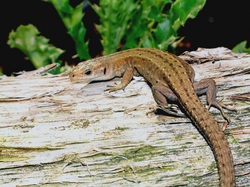 Sunday
May 31st, Another beautiful day, we got up early and took the train
to Berwick. Crossing a lane near the Yew Tree, Arlington, we met a
lizard, also crossing the lane, and there was a cuckoo singing in
Abbot's Wood. A lizard and a cuckoo's song! Not often you get that
combination. Sunday
May 31st, Another beautiful day, we got up early and took the train
to Berwick. Crossing a lane near the Yew Tree, Arlington, we met a
lizard, also crossing the lane, and there was a cuckoo singing in
Abbot's Wood. A lizard and a cuckoo's song! Not often you get that
combination.
When we first moved to Roundhill Crescent, I would hear a male
cuckoo calling, over the valley, across a gulf of air, in King Death's
Garden, all day long at this time of year. There was also a colony
of lizards (now
very wrongly named "common") on the sandy path by the
chapel in the upper cemetery. No longer, neither of them
|
|
|
|
|
|
|
|
|
|
|
|
|
|
|
2008
 February
8th 2008, wake of the storm, I went for a walk by the sea, most of
the really interesting wrack had gone already, but I took a photo
of this curious little barbed dogfish (left upper quadrant), which
intrigued our friend Tarquin, who dives a lot around this coast. Nope,
he couldn't identify it. Can you? February
8th 2008, wake of the storm, I went for a walk by the sea, most of
the really interesting wrack had gone already, but I took a photo
of this curious little barbed dogfish (left upper quadrant), which
intrigued our friend Tarquin, who dives a lot around this coast. Nope,
he couldn't identify it. Can you?
|
|
|
|
|
|
|
|
|
|
|
|
|
|
|
Feb 25th, Milo brought in a mouse: sic transit.
June 2nd, Ginger, all excited, brought in a slowworm. It was
hurt, but I thought it might recover. Slowworms are different from mice,
we have none to spare, certainly not living in the centre of Brighton,
so I hid it in my room in the old fish tank, but Ginger found out where
it was somehow, and I didn't keep my door closed, somehow, and sad to
say the poor little worm (they're really legless lizards 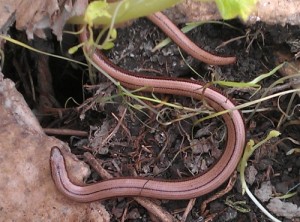 you
know) didn't survive its second encounter. |
|
|
|
|
|
|
|
|
|
|
|
|
|
|
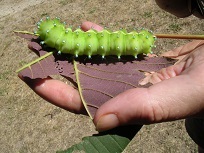 Sunnday
3th August, the campsite at Bonnieux, Haute Provence. Possibly the most
drop dead gorgeous camping opportunity we have ever encountered, in
what used to be the park of the local stately home; or so we gathered.
Our choice of a pitch, under a lovely Black Maple, was made for us by
an amazing character, already resident, see left. This magnificent psychedelic
monster is the caterpillar (we later discovered) of the Peacock
Moth, Europe's largest moth. Per was the most laid back chenille
geant. Sometimes I'd find per crawling on the ground, per'd take
to my hand without fuss, and let perself be returned to the leaves.
We were sorry to leave per, so splendid and such quiet company. Sunnday
3th August, the campsite at Bonnieux, Haute Provence. Possibly the most
drop dead gorgeous camping opportunity we have ever encountered, in
what used to be the park of the local stately home; or so we gathered.
Our choice of a pitch, under a lovely Black Maple, was made for us by
an amazing character, already resident, see left. This magnificent psychedelic
monster is the caterpillar (we later discovered) of the Peacock
Moth, Europe's largest moth. Per was the most laid back chenille
geant. Sometimes I'd find per crawling on the ground, per'd take
to my hand without fuss, and let perself be returned to the leaves.
We were sorry to leave per, so splendid and such quiet company. |
|
|
|
|
|
|
|
|
|
|
|
|
|
|
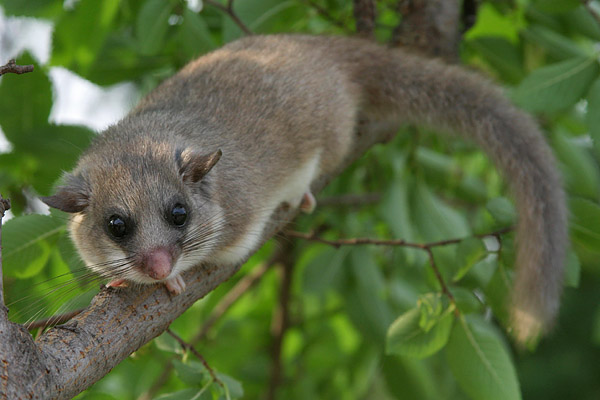 (Later
that same night (about 2.20am, it says here . . . & several nights
following). Completely unlike our other notable non-human neighbours,
the glis-glis
(aka Edible Dormouse) They are nocturnal, tree-dwelling, and they don't
mind letting you know it. This first night, we caught a glimpse. Other
nights, irresistible, when we came glis-glis spotting we never saw anything
but a little dark shape with a curling tail and awful glowing eyes.
. . (exactly like the haunting in Sheridan Le Fanu's story Green
Tea) peering down at us from the branches, but what a racket. If
these really are the edible dormice of the Romans, I'm amazed any of
them are still around. (Later
that same night (about 2.20am, it says here . . . & several nights
following). Completely unlike our other notable non-human neighbours,
the glis-glis
(aka Edible Dormouse) They are nocturnal, tree-dwelling, and they don't
mind letting you know it. This first night, we caught a glimpse. Other
nights, irresistible, when we came glis-glis spotting we never saw anything
but a little dark shape with a curling tail and awful glowing eyes.
. . (exactly like the haunting in Sheridan Le Fanu's story Green
Tea) peering down at us from the branches, but what a racket. If
these really are the edible dormice of the Romans, I'm amazed any of
them are still around.
more later . . .
index
|
|



 Weds
July 28th: Morrocan Macaques (aka Barbary Apes) in the cedar forest
above Azrou. A long walk to reach the remains of the forest, a fledgling
sparrow by the road, fruit bats sleeping in the giant new Arab Emirates
caravanserai; gardens of lavender and rosemary, sage and honeysuckle.
Can only hope the rich will come and enjoy the cedars enough to preserve
them. We took no pictures of the endangered "apes" but you can
reach an interesting site by clicking the photo. The rabble hanging around
the hotspot had a horribly corrupt relationship with the trippers, foreign
and Moroccan, the macaques who avoided this experience deserved the respect
they got from us, when we met them among the trees and just walked on
by. The cedars are wonderful.
Weds
July 28th: Morrocan Macaques (aka Barbary Apes) in the cedar forest
above Azrou. A long walk to reach the remains of the forest, a fledgling
sparrow by the road, fruit bats sleeping in the giant new Arab Emirates
caravanserai; gardens of lavender and rosemary, sage and honeysuckle.
Can only hope the rich will come and enjoy the cedars enough to preserve
them. We took no pictures of the endangered "apes" but you can
reach an interesting site by clicking the photo. The rabble hanging around
the hotspot had a horribly corrupt relationship with the trippers, foreign
and Moroccan, the macaques who avoided this experience deserved the respect
they got from us, when we met them among the trees and just walked on
by. The cedars are wonderful. you
know) didn't survive its second encounter.
you
know) didn't survive its second encounter.  Sunnday
3th August, the campsite at Bonnieux, Haute Provence. Possibly the most
drop dead gorgeous camping opportunity we have ever encountered, in
what used to be the park of the local stately home; or so we gathered.
Our choice of a pitch, under a lovely Black Maple, was made for us by
an amazing character, already resident, see left. This magnificent psychedelic
monster is the caterpillar (we later discovered) of the Peacock
Moth, Europe's largest moth. Per was the most laid back chenille
geant. Sometimes I'd find per crawling on the ground, per'd take
to my hand without fuss, and let perself be returned to the leaves.
We were sorry to leave per, so splendid and such quiet company.
Sunnday
3th August, the campsite at Bonnieux, Haute Provence. Possibly the most
drop dead gorgeous camping opportunity we have ever encountered, in
what used to be the park of the local stately home; or so we gathered.
Our choice of a pitch, under a lovely Black Maple, was made for us by
an amazing character, already resident, see left. This magnificent psychedelic
monster is the caterpillar (we later discovered) of the Peacock
Moth, Europe's largest moth. Per was the most laid back chenille
geant. Sometimes I'd find per crawling on the ground, per'd take
to my hand without fuss, and let perself be returned to the leaves.
We were sorry to leave per, so splendid and such quiet company.

 Monday
April 8th & Saturday April 13th, a pair of peregrine falcons on
the snowy crags above Tarn Beck Falls, Cumbria. I saw them
on the 8th, and was convinced they weren't buzzards, didn't get a
chance to return with binocs until the morning we were leaving and
never thought they'd turn up again, but there they were & I was
well pleased. I suppose I should relegate peregrines to the same status
as buzzards, foxes, rabbits, grey squirrels etc, since they've become
so urbanized. But just this once. The photo is from the
Monday
April 8th & Saturday April 13th, a pair of peregrine falcons on
the snowy crags above Tarn Beck Falls, Cumbria. I saw them
on the 8th, and was convinced they weren't buzzards, didn't get a
chance to return with binocs until the morning we were leaving and
never thought they'd turn up again, but there they were & I was
well pleased. I suppose I should relegate peregrines to the same status
as buzzards, foxes, rabbits, grey squirrels etc, since they've become
so urbanized. But just this once. The photo is from the  Thursday July 18th Penduline Tits, and also European Muskrats,
while kayaking through the Acheron Delta. Praying Mantis on the Korykion
Cave path above the Sanctuary at Delphi, Wednesday July 31st. I love
Praying Mantises, I've wondered why and decided it's because they
have necks (or something like) = they can turn their heads, and point
that little heart-shaped face at you. Makes them different from your
average bug. Our tour around Roumeli wasn't prolific in wildlife sightings,
but nesting storks and the little grebe swimming underwater in the
lake at Ioannina (looking very Jurassic), deserve honourable mention.
Thursday July 18th Penduline Tits, and also European Muskrats,
while kayaking through the Acheron Delta. Praying Mantis on the Korykion
Cave path above the Sanctuary at Delphi, Wednesday July 31st. I love
Praying Mantises, I've wondered why and decided it's because they
have necks (or something like) = they can turn their heads, and point
that little heart-shaped face at you. Makes them different from your
average bug. Our tour around Roumeli wasn't prolific in wildlife sightings,
but nesting storks and the little grebe swimming underwater in the
lake at Ioannina (looking very Jurassic), deserve honourable mention. seals
at Blakeney Point, also the mackerel that we were trolling for from
a pram boat called Auntie Pam, courtesy of
seals
at Blakeney Point, also the mackerel that we were trolling for from
a pram boat called Auntie Pam, courtesy of  Later,
as we walked down from the Plan Du Midi, marmottes! One of them running
in the rocks right beside us, and still there, peering cautiously, when
we caught up. Known as the beaver of the mountain tops, richly furry
with fine, long-fingered paws like gloved hands, spread on the stone:
looking at me aimiably with sleepy,
Later,
as we walked down from the Plan Du Midi, marmottes! One of them running
in the rocks right beside us, and still there, peering cautiously, when
we caught up. Known as the beaver of the mountain tops, richly furry
with fine, long-fingered paws like gloved hands, spread on the stone:
looking at me aimiably with sleepy,  narrow
eyes. Zig-zag, all the way down, I saw firecrests in the fir trees and
heard them piping all around us, and when we got down to the big trees
once a black squirrel. darting away. But the best, and most extraordinary,
was close to the foot of the descent, when Peter suddenly squealed (quietly)
& there was a mole, a panicking scrap of charcoal velvet,
so soft and low we couldn't see its feet., only the the flurry of its
deperate hurry to get into the leaf litter, and then no further, still
perfectly visible but apparently feeling safe. Lucky we weren't predators
(though Peter later confessed he had longed to pick it up).
narrow
eyes. Zig-zag, all the way down, I saw firecrests in the fir trees and
heard them piping all around us, and when we got down to the big trees
once a black squirrel. darting away. But the best, and most extraordinary,
was close to the foot of the descent, when Peter suddenly squealed (quietly)
& there was a mole, a panicking scrap of charcoal velvet,
so soft and low we couldn't see its feet., only the the flurry of its
deperate hurry to get into the leaf litter, and then no further, still
perfectly visible but apparently feeling safe. Lucky we weren't predators
(though Peter later confessed he had longed to pick it up). Sunday
16th October. Out foraging in Patching
Woods. The sweet chestnuts were ready, even picked-over, we collected
about a kilo. No funghi except some decaying puffballs, as it's been
so dry. Later after an unplanned lunch at the Hammerpot we went to
investigate a wall of white, a cliff in the woods, and found a small
disused quarry. There or thereabouts I found the 2nd four-leaved clover
of my career, and shortly after that Peter spotted a white
red deer hind, looking like a stripped and twisted little tree. She
ran away into the bracken. Made us realise we'd seen a quiet man with
a very fancy rifle, earlier. I hope he wasn't after her, but he probably
was. The photo, obviously not Patching Woods, is from
Sunday
16th October. Out foraging in Patching
Woods. The sweet chestnuts were ready, even picked-over, we collected
about a kilo. No funghi except some decaying puffballs, as it's been
so dry. Later after an unplanned lunch at the Hammerpot we went to
investigate a wall of white, a cliff in the woods, and found a small
disused quarry. There or thereabouts I found the 2nd four-leaved clover
of my career, and shortly after that Peter spotted a white
red deer hind, looking like a stripped and twisted little tree. She
ran away into the bracken. Made us realise we'd seen a quiet man with
a very fancy rifle, earlier. I hope he wasn't after her, but he probably
was. The photo, obviously not Patching Woods, is from  Wednesday
26th October. Peter and Gabriel had been working hard all day, decorating
Gabriel's room. 4.30pm: a hawk! A sparrowhawk, pluming a collared
dove on the bathroom roof, right under my window. Peter ran upstairs
to tell me. How she glared! With the most amazing arrogant marigold
eyes.A sparrowhawk! Right there! Female by the size, old by the orange
eyes. They live in King Death's Garden, across the valley, in the
tall trees. We sometimes see them passing by, cruising stealthily
along the Crescent Gardens, but never before up close.
Wednesday
26th October. Peter and Gabriel had been working hard all day, decorating
Gabriel's room. 4.30pm: a hawk! A sparrowhawk, pluming a collared
dove on the bathroom roof, right under my window. Peter ran upstairs
to tell me. How she glared! With the most amazing arrogant marigold
eyes.A sparrowhawk! Right there! Female by the size, old by the orange
eyes. They live in King Death's Garden, across the valley, in the
tall trees. We sometimes see them passing by, cruising stealthily
along the Crescent Gardens, but never before up close. 
 Thursday
December 9th Eeek! A mouse! In the house! About 4.00am, two cats were
going berserk. I finally got up for them, they were very interested
in something behind the laundry basket. It was a little field mouse,
but it got away and Peter refused to believe me. So, cats banished,
mouse vanished, but I knew I'd seen it. Later, when Peter had gone to
work and I was lazing in bed reading New Scientist, I saw its shadow
through the cut-out pelmet above the window curtains. It had escaped
up the curtains, jumped to the pelmet and found itself a safe perch.
I gave it some sunflower seeds (it had evidently been in some biological
distress: bricking it, as my brother David elegantly remarked
when he arrived later). I didn't try to catch it. I left it where it
was, to vindicate me against charges of waking people up in the middle
of the night for nothing. We let it go, out in the garden.
Thursday
December 9th Eeek! A mouse! In the house! About 4.00am, two cats were
going berserk. I finally got up for them, they were very interested
in something behind the laundry basket. It was a little field mouse,
but it got away and Peter refused to believe me. So, cats banished,
mouse vanished, but I knew I'd seen it. Later, when Peter had gone to
work and I was lazing in bed reading New Scientist, I saw its shadow
through the cut-out pelmet above the window curtains. It had escaped
up the curtains, jumped to the pelmet and found itself a safe perch.
I gave it some sunflower seeds (it had evidently been in some biological
distress: bricking it, as my brother David elegantly remarked
when he arrived later). I didn't try to catch it. I left it where it
was, to vindicate me against charges of waking people up in the middle
of the night for nothing. We let it go, out in the garden.  Friday
29th May Momentous day. (I don't usually do butterflies but
Friday
29th May Momentous day. (I don't usually do butterflies but  Sunday
May 31st, Another beautiful day, we got up early and took the train
to Berwick. Crossing a lane near the Yew Tree, Arlington, we met a
lizard, also crossing the lane, and there was a cuckoo singing in
Abbot's Wood. A lizard and a cuckoo's song! Not often you get that
combination.
Sunday
May 31st, Another beautiful day, we got up early and took the train
to Berwick. Crossing a lane near the Yew Tree, Arlington, we met a
lizard, also crossing the lane, and there was a cuckoo singing in
Abbot's Wood. A lizard and a cuckoo's song! Not often you get that
combination. (Later
that same night (about 2.20am, it says here . . . & several nights
following). Completely unlike our other notable non-human neighbours,
the
(Later
that same night (about 2.20am, it says here . . . & several nights
following). Completely unlike our other notable non-human neighbours,
the